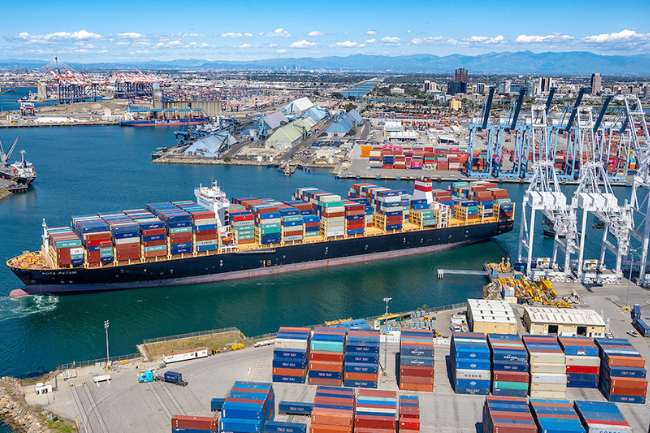Federal Minister for Maritime Affairs Muhammad Junaid Anwar Chaudhry on Thursday announced that Pakistan is steering toward a transformative maritime era, aiming to establish itself as a key regional hub for trade and connectivity while driving the growth of the blue economy.
Speaking at the Regional Transport Ministers’ Conference, Chaudhry said Pakistan’s ports, shipping sector, and coastal infrastructure are being modernized under a comprehensive maritime vision extending to 2035. He revealed that port master plans are being updated with international assistance to align with global standards, and Gwadar—backed by a new international airport—is set to become a regional gateway for energy, fiber, and IT connectivity.
The minister projected that Pakistan’s economy could reach $1 trillion by 2035, with trade volumes surpassing $250 billion, supported by modernized port operations and digital transformation initiatives. He said the Pakistan National Shipping Corporation (PNSC) plans to expand its fleet to 30 vessels by mid-2026, contributing up to 2 percent to GDP, while the long-term vision targets an 80-ship fleet by 2035.
Highlighting Karachi Port as Pakistan’s leading trade facility, Port Qasim as one of the world’s most developed, and Gwadar as the emerging hub of regional logistics, he said improved road and rail connectivity is expected to be completed by 2028, with Gwadar leading in cargo throughput by 2030.
Junaid Chaudhry termed the revival of the Gaddani ship recycling yard and the creation of an Integrated Maritime Industrial Complex at Port Qasim as “game changers” for Pakistan’s maritime future. He also highlighted the launch of a modern port community system powered by artificial intelligence, designed to streamline port operations and trade facilitation.
Reaffirming Pakistan’s commitment to the UN 2030 Agenda, the minister said the country’s Blue Economy strategy aims to link the Arabian Sea with the Gulf, Central Asia, East Africa, and South Asia, transforming the region into a corridor of prosperity. He noted that Pakistan’s 1,046-kilometer coastline and 290,000-square-kilometer Exclusive Economic Zone (EEZ) hold immense potential, with plans to raise the maritime sector’s GDP share from 0.8 percent to 2 percent by 2035 through innovation and global partnerships.
The minister invited regional counterparts to visit Pakistan’s ports to witness ongoing developments, adding that Karachi Port and Port Qasim currently operate at only half their capacity, offering vast opportunities for regional collaboration. He emphasized that Gwadar Port, equipped with modern transshipment facilities, was ready to play a pivotal role in regional integration.
The conference’s session on Regional Maritime Cooperation and the Blue Economy brought together experts and policymakers from 26 countries, including transport ministers and delegates from Russia, Belarus, Sri Lanka, Maldives, Turkmenistan, Iran, Kazakhstan, Turkey, Uzbekistan, Azerbaijan, and Saudi Arabia, along with representatives from ECO, IRU, ADB, UNSG, and IsDB.
Concluding his address, Junaid Anwar Chaudhry said Pakistan’s maritime journey marks a decisive shift “from potential to progress and integration,” reflecting the nation’s resolve to transform its seas into “bridges of prosperity.”




